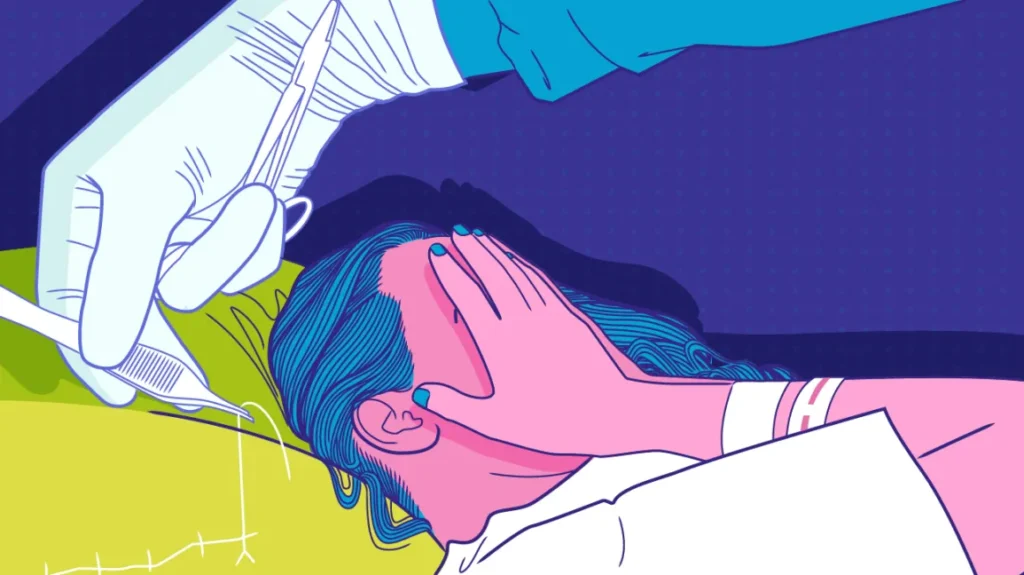The husband stitch? Does it make the healing process easier after birth? It takes roughly six months to a year for a woman’s body to fully heal after giving birth to a baby. It’s a grueling and painful process, one that requires endless amounts of support and patience. A woman won’t feel like herself again, especially not anytime soon after birth. The healing process differs from person to person, and it’s the job of the healthcare professionals and the woman’s support to help make that process less mentally exhausting. Many women aren’t aware of how their bodies can be violated, even in their most vulnerable state post-labor. A husband stitch is a form of medical malpractice, where a doctor adds in an additional stitch to repair a vaginal laceration to make the vagina tighter, to cause more pleasure for a male partner, post-labor healing.
Angela Sanford, a 36-year-old mother from Fort Mill, South Carolina, had no idea she had received a husband stitch after giving birth to her first child. It was the way she had to find out that mentally broke her for years. After having intercourse with her husband for years after the first birth, she realized that she was constantly feeling an unholy amount of pain afterward. She had gone to her gynecologist for a pap smear, expressing her concerns about the vaginal pain to her nurse midwife. Confused, she started to feel more pain as her nurse explained that something didn’t seem right during her examination. It was that moment Angela Sanford first learned the term “husband stitch.” She had just learned that her doctor, many years ago, had nonconsensually given her a husband stitch without telling her or her husband, and it was the cause of all the pain that she had been experiencing.
Angela’s husband did not want her to go through even more pain. Why would he? Hardly any husband would. However, there are several instances where the husband will ask the doctor to add a husband stitch in for his sake. The main problem is that the woman faces the repercussions of medical malpractice without any consent being given or any prior knowledge being shared. It is just, yet again, another example of objectification in a healthcare space. There is a common misconception about how a woman’s genitals are after giving birth. Many believe that their vaginal opening stays stretched and loose after birth, but that is entirely false. The vaginal opening has a physiological function where its elasticity helps it slowly heal back to its usual size, and by inserting an additional stitch for male pleasure, that healing process becomes longer and more painful for a woman.
Many women and even men don’t know what a husband stitch is. News about something so detrimental isn’t quite as public as it should be, so as an individual, educating yourself on how to be a good form of support for a pregnant woman is something that not only benefits her but also benefits you and your character. Objectification in a healthcare workspace is the last thing a medical professional wants to be a part of. As a doctor who took an oath to help others, intentionally putting women through more pain goes against that oath. And as a person? Inflicting pain on another person, directly or indirectly, goes against every ethical moral that could exist.
Works Cited
Miller, Korin. “The ‘Husband Stitch’: Myth vs Fact.” Health, Health, 14 Sept. 2023, www.health.com/condition/pregnancy/what-is-a-husband-stitch#:~:text=Husband%20Stitch%20Meaning,the%20vaginal%20opening%20during%20childbirth.
Murphy, Carrie. “The Husband Stitch Isn’t Just a Horrifying Childbirth Myth.” Healthline, Healthline Media, 25 Oct. 2023, www.healthline.com/health-news/husband-stitch-is-not-just-myth.
